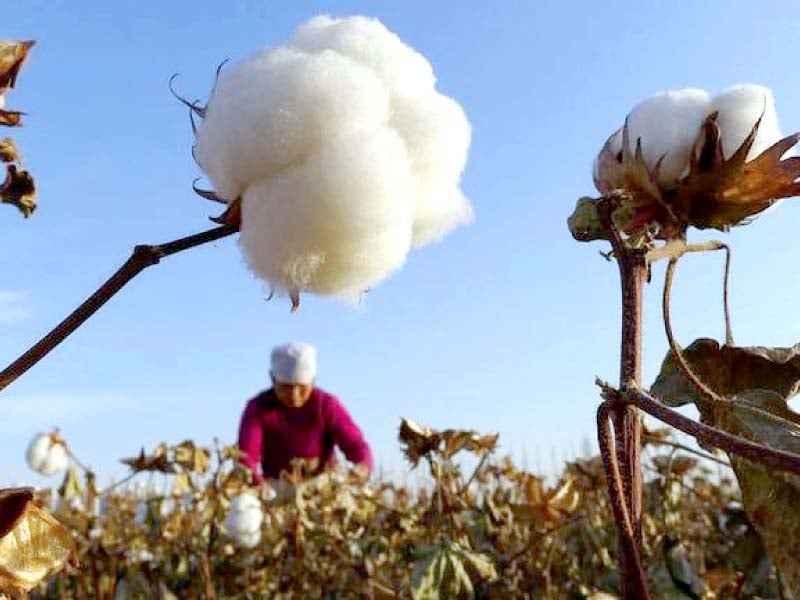
Pakistan has reported a jump of 62% in cotton production to 5.99 million bales in the first three and a half months of the current season, reducing reliance on imports significantly.
The production of the commodity, however, slowed down in recent weeks compared to the initial growth of around 80% as “white fly attack, mainly in the south Punjab cotton region, reduced the yield by 10-15%,” Pakistan Cotton Ginners Association (PCGA) former vice chairman Muhammad Asim Saeed said while talking to The Express Tribune.
According to PCGA’s latest fortnightly cotton arrival report released on Wednesday, the output stood at 3.70 million bales at the same time last year.
Saeed, who is also Vice President of the Multan Chamber of Commerce and Industry (MCCI), said the revival of cotton production came after “the government announced for the first time cotton support price (minimum purchase price) for the current season at Rs8,500 per 40 kg.”
The intervention price encouraged cotton growers to plant the crop over a larger area this year compared to the previous sowing season, giving a boost to the harvest.
Pakistan produced less than 5 million bales last year (FY23). The government initially estimated cotton production at over 12 million bales for the current season but the white fly attack forced a revision of the estimate to around 10 million bales, it has been learnt.
The output of 10 million bales is lower by 2 million bales compared to the country’s average production of 12 million bales a year, Saeed said, adding that cotton production had peaked at 14.8 million bales in the recent past.
He pointed out that the cotton price had dropped below the support price to Rs7,000-7,500 per 40 kg and demanded that the government buy the commodity from growers to stabilise prices around the support level of Rs8,500.
Read Massive fall in cotton yield feared
He urged the government to activate the Trading Corporation of Pakistan (TCP) for cotton purchase from growers, as decided at the time of announcement of the support price. A further delay in reactivation of TCP may destabilise the market and shake the confidence of growers, who may switch to some other profitable crop next year.
Saeed revealed that the increase in cotton harvest reduced demand for imports by 5-6 million bales in the current season, adding that overall imports would be around 5 million bales to meet the country’s total consumption requirement of 15-16 million bales.
Pakistan’s textile exports have, however, remained under pressure so far this year amid high inflation and a spike in energy prices.
Topline Research, in a commentary, said Pakistan’s textile exports came in at $1.4 billion in September 2023, down 6% month-on-month and 11% year-on-year. It was mainly due to the decline in exports of both basic textiles and value-added segments.
“Lack of energy supply with increased electricity rate, higher interest rates and exchange rate fluctuations were the prime reasons for the decline in textile exports,” it said.
Overall, in the first quarter (Jul-Sept) of FY24, textile exports declined 10% to $4.1 billion compared to the same period of last year.
In the coming months, cotton exports are expected to rise as favourable weather conditions have resulted in a better cotton crop in the country.
“However, elevated energy costs and shortage of gas will continue to pose a challenge to the textile industry. In addition, the slowdown in global economy is a key challenge facing the sector,” the research house said.
Published in The Express Tribune, October 19th, 2023.
Like Business on Facebook, follow @TribuneBiz on Twitter to stay informed and join in the conversation.


















COMMENTS
Comments are moderated and generally will be posted if they are on-topic and not abusive.
For more information, please see our Comments FAQ